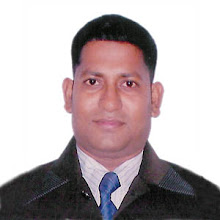Torsion, Tolerances and Single-Sided Welding in Pre-Engineered Steel Buildings
Several issues may come to mind when you are investigating the different pre-engineering and assembly applications related to all-steel structures. Such issues include torsion, tolerances, and single-sided welding.
The Metal Building Manufacturers Association Manual provides the tolerance ranges for manufacture and erection for a number of pre-engineered steel structure cold-form units and any built-up structural facets. There are specific figures used with any pre-engineered steel structural framework system, so the ranges of variation are critical to calculate accurately. Every all-steel building structural framing scheme’s effectiveness can be made to perform to a standard well over 90 percent. It is necessary to make analytical observation along with accurate computations for web sweep and the actions of camber on built-up building components to design correct erection tolerances into the steel building at assembly. When loading occurs, excessive burden on the steel structure can take place if ranges of variation are not added during the design stages.
Whenever structural components in a steel structure are attached together, the force of torsion will be at work. The exclusive form of the building parts also enhances this. Torsion can also be caused by planning deficiencies and misapplication of building members. If door jambs and building exterior masonry walls are adhered to the eave strut’s flanged bottom, or the columns throughout the endwall are assembled to the sides of the primary structural framework system, torsion is introduced to the pre-fabricated, pre-engineered steel building. The cold-formed steel components that are not a part of a welded pipe are very faulty in their ability to brace for larger torsion forcing. “Kickers”? are often used to remedy this, which are actually flange bracing that have a crossways feature. These are implemented in structural endwall framework that employs a “Z”? purlin and flush girts and requires that the expandable building endwalls use the both of the rafter’s sides so that they may be supported at expansion. The installation of by-pass girts and open-web joists combined with endwall framing and a rigid frame is another style of layout. The option of shut tubular building sections to replace cold-formed pieces should be considered, but only if flange reinforcement is not seen as feasible.
Single-sided welding is the final approach to examine. The manufacturing plant’s welding apparatus produces the welds between the flanges and web on one side only. Welded bars and plates for the cohesion of the primary frame amount to what steel building systems depend heavily on. A number of planners and engineers assert that single-sided welds are not enough for proper building support. Single-sided welds do not adversely influence primary frames, except, according to some studies, for some earthquake designing situations which can develop into a weld defeat where the frame rafters are close to the end plates. Frames that will sustain fatigue, huge loading forces, and also lateral force movement can not implement this welding procedure. Thought should be given to a double-sided weld in these instances. Rigid frames, on the other hand, must be characteristically tolerant of all gravity and lateral loads in force.
Second man dies at Texas ICE detention facility in two weeks - The Guardian
-
1. Second man dies at Texas ICE detention facility in two weeks The
Guardian
2. 3rd detainee dies at Camp East Montana KTSM 9 News
3. Man...
14 hours ago


No comments:
Post a Comment